Concrete
Maria Barnas, Dianne Hagen, Ronny Heiremans, Lucas Lenglet, Els van den Meersch, Katleen VermeirIn some respects, Concrete is an exploration of quiet - a winter landscape of images; projections, objects and installations.
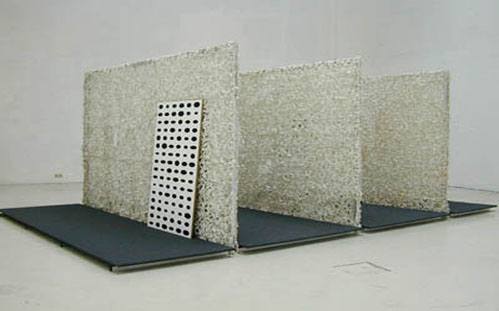
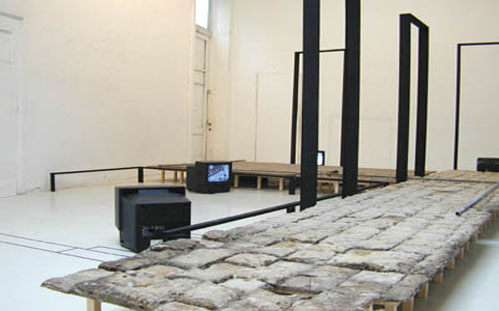
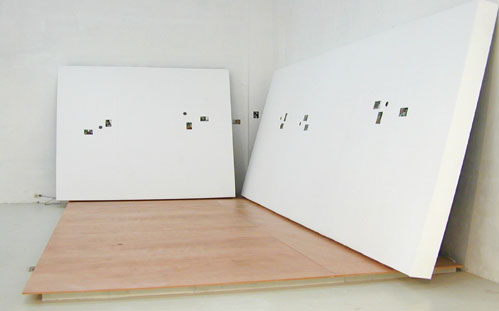
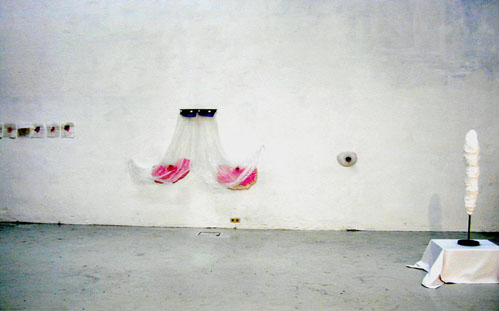

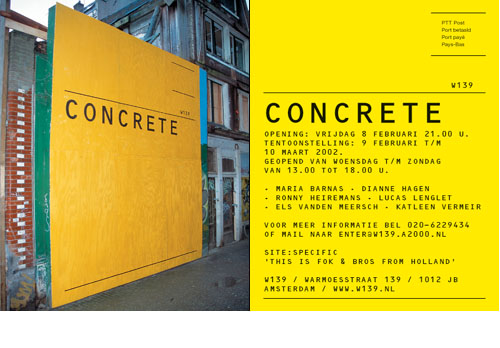
With their silence and modest materiality, the works refer directly to their content, the result of investigation and reflection. The works have a certain abstraction although the form immediately relates and results from its content, favouring simple materials and principles over exuberance, colour and garishness. The pieces are implied in the title's literal meaning - tangible and concrete, hard and material, converging and fusing with their content (concretion). The show even includes physical concrete.
The artists were selected because of their similar working methods. Their intentions, research and statements share considerable commonalties, one of which is the position of human beings in their environment - urbanised or otherwise.
Another common feature is the fact that the oeuvre of these artists includes producing objects or installations in which light, slides, video or sound are employed alongside physical materials.
Maria Barnas has been following a 'character' named Iris for some time. This young woman is a manic collector. Barnas presents a near-documentary installation that centres on photos of the house, and Iris' narration. The rhythm of her room directs the installation. About Iris' affliction Barnas wrote: 'When Iris is at home she can't wait to leave because it's so chaotic inside. Once outside, she wants to go home. But first she has to tidy everything up. Iris has 4 table legs and 3 tabletops. She can't decide which tabletop to use.'
Lucas Lenglet shows a well-wrought installation entitled 'Vennsetcamostage'. The piece is both concrete and abstract. The materials used are familiar although combined so as to give the work a multi-layered meaning full of unsuspected associations, united by formality.
Dianne Hagen has produced untitled objects fashioned from materials ranging from architect's paper to silicon cement. She imbues her pieces with an intriguing identity even though they seem to defy all categories. For Hagen, it's important to show exactly how the works were made - which doesn't detract from their mysterious poetry.
Els Vanden Meersch has created a work called 'bewoonbaar / onbewoonbaar' (habitable/inhabitable), a reconstruction of her own flat but now with the floor installed the wrong way round, exposing its underside of seams and joints. There's even a corridor, a toilet and a bathroom. And the adjacent spaces are sketchily indicated. The installation has a formal gloss combined with a certain lived-in quality - concrete lumps on the underside of tiles and a worn out threshold.
The front space has been taken over by Ronny Heiremans and Katleen Vermeir, both currently residents at PS1 in New York, who opted to produce another collaborative piece for 'Concrete'. Both artists create work drawing on architecture and history. 'Tableaux vivants (construction models)' consists of a large projection in which a number of strangely garbed people are filmed in a constructed décor. The video shows the 'extras' and the environment with the skyline of Brussels in the background. The colourful clothing is a vivid contrast with the grey vertical lines of the city landscape. 'Diptych (the ideal city)' returns to this phenomenon. This time, the camera zooms in to present us with close-up portraits - we now see individuals, no just faceless members of a group - against the backdrop of the New York skyline. The works are highly incisive - the surrealism of the images immediately becomes indelibly imprinted in the memory.
Designpolitie made a physical invitation for this show, a part of the series of invitations for W139 that year that appeared throughout Amsterdam.